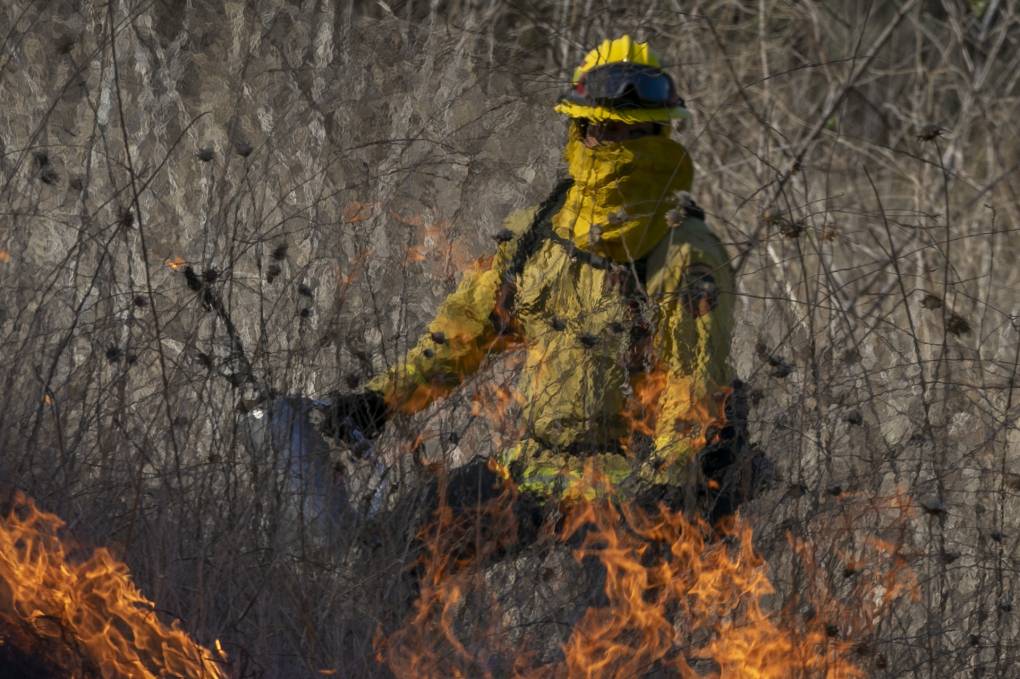Secretary Crowfoot, you said you want partnerships between states and the federal government on forest management and wildfire mitigation. What would be your top priority for this?
Crowfoot: In California, our federal agencies own and manage 57% of our forests. We are not going to make a dent protecting California against catastrophic wildfire without scaled-up funding and priority from the federal government. And I think President Biden and Vice President Harris have made it very clear that they’re going to be much more proactive partners than the last administration.
The top priority is to fund the U.S. Forest Service to actually do proactive forest resilience work. In recent decades, most of the Forest Service funding has been raided every year for fire response, [leaving] less and less on actually doing things like prescribed burns and ecologically sensitive treatments in the forest. And so we have to ensure that the federal government actually funds these federal agencies to get in there and do the ecologically based forest-health work that is needed, or else we’re just going to spend more and more responding. Federal funding will be an important indication of the new administration’s priority to help California combat wildfires.
Newsom has called on legislators to develop legislation banning new fracking permits, but no proposal has yet emerged. Is the Newsom administration working on this?
Crowfoot: This fall, the governor made clear that he does not see a future for fracking in California. And he explained that he would support legislation to phase it out. It’s our understanding that legislative members are developing a proposal to phase out fracking in California. And we look forward to talking to them and working with them ultimately to meet the vision that the governor set forth this fall.
Advocates are calling on the governor to set a date to phase out fossil fuels. Will that be part of any proposal that emerges?
Crowfoot: Fossil fuel extraction in California was at its height in 1986, and it’s been reduced every year for the last few decades. At this point, we produce about 40% of that peak use. At the same time, our consumers use over 600 million barrels of oil each year in the form of gasoline to power cars and trucks.
It is critical that we reduce our reliance and ultimately eliminate our reliance on fossil fuels. If no other barrel of oil came out of the ground in California but we don’t change our habits, we’ll simply be importing more oil from other parts of the world. We need to reduce and ultimately eliminate our demand if we’re going to meet the climate challenge.
We’ve been clear that as we phase out our demand for fossil fuels, we will phase out the supply in our state. We anticipate this will happen in coming years, as we march toward the 2045 carbon neutrality goal. I do anticipate that there will be a clear trajectory for the phasing out of both demand and supply.
Secretary Blumenfeld, in a letter to state senators you said the opportunity to revisit the cap-and-trade program, which has been criticized by the environmental justice community, exists as part of updating CARB’s Scoping Plan. How would you like to see cap-and-trade changed?
Blumenfeld: The cap-and-trade program is a market-based mechanism that basically does two things. Year after year, the amount of carbon that can exist under the cap goes down — that’s how you reduce greenhouse gas emissions. The second part is the trading of allowances in a market system, so that there’s an actual price on carbon; a lot of people talk nationally about the importance of putting a price on carbon.
There are two criticisms of cap-and-trade. One is that there’s an overreliance on [the allowance] mechanism. So moving forward we need to do more regulation and less market-based. The second valid critique is related to environmental justice, where you’re living in low-income communities of color and say, “Well, someone shouldn’t be allowed to pay to emit more pollution in my community.” We’re going to look at both in terms of how we get to our 2030 targets. Then we have a state goal of getting to carbon neutrality by 2045; cap-and-trade will play a role but we all anticipate it will play a slightly smaller role than we originally thought. And we need to make sure that those equity concerns are brought to the forefront.

